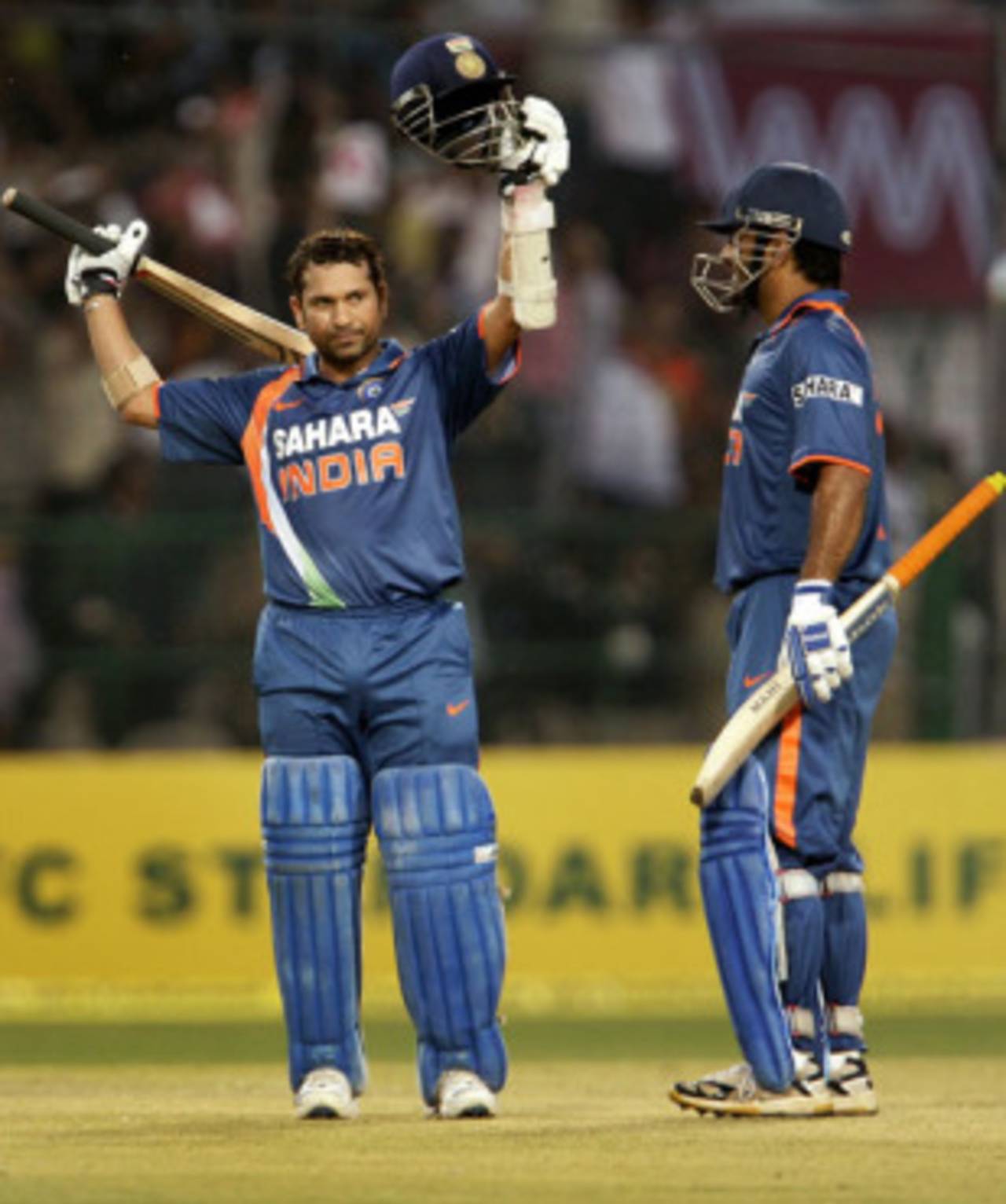I am the superstitious kind: I never praise a shot because I fear the moment I do so, the batsman gets out. Till Sachin was on 190
in Gwalior, I was rooted in my seat in the dressing room. But when he got to 190, I couldn't contain myself. I came out and started cheering every stroke till he got to 200.
When he got to 180, I knew he was going to get it, but when he was in the 190s I was concerned. If I was in his place, I would have tried to finish it quickly, because the longer I take, the greater the possibility of me getting out. I would try to wrap it up in three or four balls.
Also, he was looking really tired: he had been clutching his right side and showing signs of cramping. So when I stepped out of my seat, I was just saying, "Finish it, finish it."
But Sachin is never in a hurry. He is a different kind of batsman - one who can rotate the strike with ease and understands there is no need to take any chances. Whenever I have been on the brink of landmarks (Melbourne in 2003, Multan 2004) he has instructed me to do this and do that. But those are things only he can do.
You might say, this is 200 - a figure no batsman in the history of the game has crossed - but then we are talking about Tendulkar. He looked calm and confident even when he was at the non-striker's end in those final moments. I knew he just needed one ball, and I also knew he would get the opportunity.
He had started the innings in a confident mood. As soon as he hit his first boundary, off the third ball of the second over, he walked up to me and said the pitch was full of runs and we only needed to time the ball. He told me not to think of boundaries or going after the bowler. He was right: throughout he picked the gaps and played the ball as he saw it. He was not thinking too much and that helped.
Ten years down the line if I am asked to pick a shot or two from his innings I would love to pick many. But the ones that were special to me were the cover drives off the back foot past extra cover, and the punch, once again on the back foot, past point, off Wayne Parnell. Another incredible shot was the straight six over Roelof van der Merwe's head. The left-arm spinner is a difficult one to get away, but Sachin was able to make the room and the energy to hit it clean over the sight screen.
It is not an easy summit for a batsman to conquer because he needs to possess a variety of attributes. In the past I mentioned on four or five occasions that Sachin had the capability to score a double-hundred in ODIs. I was confident only he could achieve such a feat only because of his experience and the kind of form he is in at the moment.
"I have seen him over the last decade and he is still improving with every match. I think he is in better form now than he was in 1998"
Importantly, he had the hunger and the patience to last for the entire 50 overs. You need to bat out the entire innings to score a double. And it is not so easy because it is not just about hitting boundaries; it is also rotating the strike. I knew if he had 150 balls, he could do it, and he did it in 147 deliveries.
I do not want to dwell here on my own batting, but in the past certain people have said I could have scored 200 in one-day cricket, because of my performances in Tests, where I have got near to a hundred before lunch. But I have had the tendency to take too many risks once I reach the 120 or 130-run mark in ODIs. That is difference between me and Sachin.
We have had chats about him scoring 200. He thought it was difficult, but I told him only he could do it. Last year
in New Zealand, when he retired on 163 I told him he had missed the opportunity, but he said "
Agar meri kismat mein hoga toh woh mil jayega [It will eventually happen if I am destined to do it]." He said the same when he
got 175 against Australia last year. On Wednesday he said "
Woh likha tha, toh mil gaya [I got what was destined]".
Back in 1998 everyone felt Sachin was in prime form. I was not in the Indian team then. But I have seen him over the last decade and he is still improving with every match, he is practising more than anybody else in the nets, working hard on his fitness. I think he is in better form now than he was in 1998.
Nagraj Gollapudi is an assistant editor at Cricinfo
